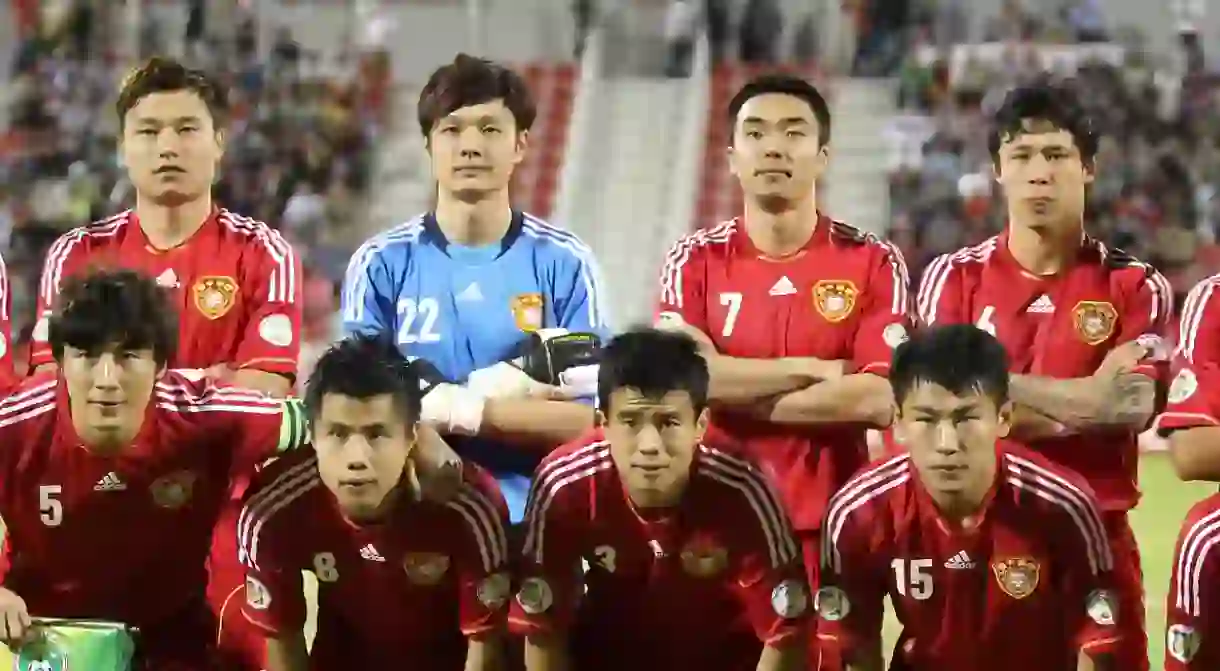How China's Soccer Philosophy Is Undergoing A Major Overhaul

Historically, football has never been one of China’s priorities, but a very conscious shift in attitude is underway. China has declared its ambition to reform its attitudes towards the world’s most popular sport.
The proposals put forward affect various aspects of the game, with the Chinese Super League (CSL), the country’s top-tier domestic competition, leading the way.
Having seen corruption infiltrate the league, the Chinese Football Association (CFA) has already done a great deal of reputation rebuilding. In 2013, a number of former players and officials were banned for match-fixing. Two officials served jail time. Shanghai Shenhua was one of 12 clubs punished after the same investigation, with its 2003 league title stripped from them after they were found guilty of fixing a game against Shaanxi Guoli that season.
The CFA has worked hard to ensure its league has put those troubles behind them, and they appear to have been successful, announcing in a statement that ‘public enthusiasm for football gradually restored, and with the audience and television viewers for the CSL at record highs’. High-profile players have been a big factor in attracting those larger audiences.
When Shanghai Shenhua added Nicolas Anelka and Didier Drogba to the books in 2012 it was a global statement, and there have been plenty since. Their current squad includes Demba Ba, Fredy Guarín and Obafemi Martins, while other Chinese clubs follow a similar transfer policy.
The likes of Gervinho, Asamoah Gyan, Graziano Pellè, Paulinho, Hulk and Jackson Martínez have all made big-money moves over the last few seasons and in the 2016 January-February transfer window the CSL outspent the English Premier League by more than $100 million, making them the biggest spenders in the transfer market globally.
One of the key factors in China’s development into football is that the domestic investment is going hand-in-hand with an international drive. While the financial clout of the CSL has been much publicized, with the quality of players and football being played on the rise, the injection of funds into the Beautiful Game worldwide is also at play.
Manchester City, owned by the Abu Dhabi United Group, sold a 13-percent share of the club to Citic Capital, a Chinese investment company, while a number of big European clubs are now under Chinese ownership. Atletico Madrid and Espanyol in Spain, Aston Villa in England, French side Nice and Italian giants Inter Milan have all received major investment from Chinese businesses.
Inter Milan’s new owners, Suning Holdings, already back Jiangsu Suning FC, the CSL club that spent €28m on Ramires of Chelsea and €50m on Alex Teixeira from Shakhtar Donetsk (both CSL records at the time) in 2016. This is all on top of the three-year sponsorship deal the company signed with European powerhouse FC Barcelona in 2014.
The transfer policies of CSL clubs, as well as the international investment into foreign clubs, draws parallels with the domestic leagues and business models of the Middle East, particularly Abu Dhabi and Qatar. How China differs to these states is the long-term planning at a grassroots level.
Yet it’s not just about splashing the cash around the world. The domestic investment goes beyond the CSL; it is part of a far broader initiative to develop the sport within the country. CNN reported how China plans to create ‘up to 20,000 soccer schools and 70,000 pitches by 2020. With more than 30 million primary and secondary school age students being encouraged to play regularly’.
According to the Financial Times, the considered push from China into the world’s most popular game, comes straight from the top: ‘Xi Jinping, China’s president and an avowed football fan, has said he wanted to make the country a football powerhouse, with the government earlier this year approving a programme that aims to elevate China’s national team to among Asia’s best by 2030.’
It doesn’t stop there. ‘Asia’s best by 2030’ is a step on the path to becoming a ‘world football powerhouse by 2050’. The 50-point plan has been published for all to see, and includes everything from ‘optimizing investment mechanisms’ to ‘horizontal and vertical connection of four football competition systems’. Preparations for a bid to host the World Cup are also well underway.
Certainly, spectacular goals from 40 yards at the Rio Olympics like the one 22-year-old Tan Ruyin scored for the women’s national side help boost the profile. While the men’s side have some catching up to do, China’s women’s team hover around the top 10 in FIFA’s rankings. A large part of the plan focuses on the national teams, improving the players’ technical abilities, the coaching structures and the mechanism of selection.
China’s ambitions are to be taken seriously, based on the level of investment and the sheer pool of potential players they can pick from, but history doesn’t offer massive amounts of promise. Aside from the odd anomaly, those dining at football’s top table are the same South American and European heavyweights they have always been. Whether China can meet the targets it set out remains to be seen, but it will be fascinating to watch it try.













